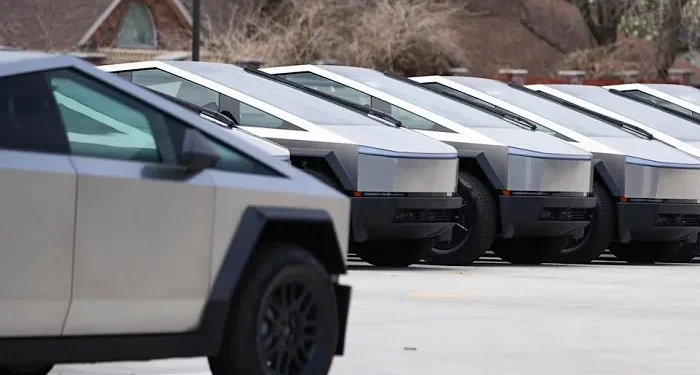Tesla is refreshing its model lineup in China and the U.S. amid tariff and demand concerns.
Tesla removed the “order” button on its Chinese website for the Model S sedan and Model X SUV, its high-end electric vehicles built at its factory in Fremont, California, after China raised tariffs on U.S. imports to 125% from 84%.
Chinese customers can still buy the vehicles from existing inventory in China. Although Tesla has only sold about 2,000 Model S and Model X electric vehicles in China, the move highlights the precarious position Tesla and other automakers find themselves in amid the trade war.
Tesla shares fell on Friday, but are up about 5% over the past five days amid volatility driven by President Trump’s erratic trade policy changes.
Although Tesla’s sales in China rebounded in March with the launch of the facelifted Model Y, Tesla’s total retail sales in China reached 134,607 units in the first quarter, up only 1.7% year-on-year, but down 31.6% month-on-month, according to data from the China Passenger Car Association (CPCA) (CNEVPost translation).
In the United States, Tesla Cybertruck demand issues ultimately led to the launch of a new, cheaper trim level.
The Cybertruck Long Range Edition is now available for order in the United States, starting at $69,990, which is $10,000 cheaper than the previous base Cybertruck AWD version.
However, the $10,000 price cut resulted in a reduction in the configuration and performance of the Cybertruck. The long-range Cybertruck is rear-wheel-drive only, with a range of 350 miles (about 560 kilometers), a towing capacity of only 7,500 pounds (about 3.5 tons) (down from 11,000 pounds for the all-wheel-drive version), and an acceleration time of 0-60 mph (about 97 kilometers/hour) of 6.2 seconds, while the all-wheel-drive version is 4.1 seconds.
In terms of interior, the long-range version uses cloth seats instead of “tactical” leather seats, no rear seat touch screen, and no retractable trunk lid. In addition, it also cancels the adaptive air suspension, rear light bar, and various power outlets in the cabin.
Tesla’s launch of the lower-priced Cybertruck comes at a time when it is trying to stimulate market demand, and Cybertruck’s sales momentum is gradually weakening. According to Cox Automotive data, Tesla delivered only 6,406 Cybertrucks in the first quarter, less than half of the 12,991 in the fourth quarter of last year.
While overall U.S. electric vehicle sales grew 10% in the first quarter of 2025, Cybertruck sales fell, according to Cox. Tesla has cut prices on the Cybertruck and cut shifts at its Austin Gigafactory due to surging inventory. Meanwhile, the Cybertruck has been hit with a series of recalls, the latest due to an adhesive defect that caused trim to fall off the truck.
As CEO Elon Musk hitched his wagon to the Trump White House, sales of trucks and Tesla electric vehicles in general fell, leading to protests against policies enacted by Trump and Musk through the Department of Government Efficiency (DOGE).
Musk’s political activities are seen as damaging the Tesla brand overall, and the Cybertruck in particular, which is closely associated with the CEO.
Related topics:



































